- Home
- Jack Kerouac
On the Road: The Original Scroll: (Penguin Classics Deluxe Edition)
On the Road: The Original Scroll: (Penguin Classics Deluxe Edition) Read online
ON THE ROAD
The Original Scroll
ALSO BY JACK KEROUAC
THE DULUOZ LEGEND
Visions of Gerard
Doctor Sax
Maggie Cassidy
Vanity of Duluoz
On the Road
Visions of Cody
The Subterraneans
Tristessa
Lonesome Traveller
Desolation Angels
The Dharma Bums
Book of Dreams
Big Sur
Satori in Paris
POETRY
Mexico City Blues
Scattered Poems
Pomes All Sizes
Heaven and Other Poems Book of Blues
Book of Haikus
Book of Sketches
OTHER WORK
The Town and the City
The Scripture of the Golden Eternity Some of the Dharma
Old Angel Midnight
Good Blonde & Others
Pull My Daisy
Trip Trap
Pic
The Portable Jack Kerouac
Selected Letters: 1940–1956
Selected Letters: 1957–1969 Atop an Underwood
Door Wide Open
Orpheus Emerged
Departed Angels
Windblown World
Beat Generation
ON THE ROAD
The Original Scroll
JACK KEROUAC
Edited by Howard Cunnell
Introductions by Howard Cunnell, Penny Vlagopoulos, George Mouratidis, and Joshua Kupetz
VIKING
VIKING
Published by the Penguin Group
Penguin Group (USA) Inc., 375 Hudson Street, New York, New York 10014, U.S.A. • Penguin Group (Canada), 90 Eglinton Avenue East, Suite 700, Toronto, Ontario, Canada M4P 2Y3 (a division of Pearson Penguin Canada Inc.) • Penguin Books Ltd, 80 Strand, London WC2R 0RL, England • Penguin Ireland, 25 St. Stephen’s Green, Dublin 2, Ireland (a division of Penguin Books Ltd) • Penguin Books Australia Ltd, 250 Camberwell Road, Camberwell, Victoria 3124, Australia (a division of Pearson Australia Group Pty Ltd) • Penguin Books India Pvt Ltd, 11 Community Centre, Panchsheel Park, New Delhi – 110 017, India • Penguin Group (NZ), 67 Apollo Drive, Rosedale, North Shore 0745, Auckland, New Zealand (a division of Pearson New Zealand Ltd.) • Penguin Books (South Africa) (Pty) Ltd, 24 Sturdee Avenue, Rosebank, Johannesburg 2196, South Africa
Penguin Books Ltd, Registered Offices: 80 Strand, London WC2R 0RL, England
Copyright © John Sampas, Literary Representative, the Estate of Stella Sampas Kerouac; John Lash, Executor of the Estate of Jan Kerouac; Nancy Bump; and Anthony M. Sampas, 2007
Introduction copyright © Howard Cunnell, Joshua Kupetz, George Mouratidis, and Penny Vlagopoulous, 2007
All rights reserved
LIBRARY OF CONGRESS CATALOGING IN PUBLICATION DATA
Kerouac, Jack, 1922–1969.
On the road: the original scroll / Jack Kerouac; edited by Howard Cunnell; introduction by Howard Cunnell, Joshua Kupetz, George Mouratidis, and Penny Vlagopoulos.
p. cm.
ISBN: 1-4295-5100-3
1. Beat generation—Fiction. I. Cunnell, Howard. II. Title.
PS3521.E735.O5 2007
813'.54—dc22 2007005306
Without limiting the rights under copyright reserved above, no part of this publication may be reproduced, stored in or introduced into a retrieval system, or transmitted, in any form or by any means (electronic, mechanical, photocopying, recording or otherwise), without the prior written permission of both the copyright owner and the above publisher of this book.
The scanning, uploading, and distribution of this book via the Internet or via any other means without the permission of the publisher is illegal and punishable by law. Please purchase only authorized electronic editions and do not participate in or encourage electronic piracy of copyrightable materials. Your support of the author’s rights is appreciated.
CONTENTS
Fast This Time: Jack Kerouac and the Writing of On the Road
HOWARD CUNNELL
Rewriting America: Kerouac’s Nation of “Underground Monsters”
PENNY VLAGOPOULOS
“Into the Heart of Things”: Neal Cassady and the Search for the Authentic
GEORGE MOURATIDIS
“The Straight Line Will Take You Only to Death”: The Scroll Manuscript and Contemporary Literary Theory
JOSHUA KUPETZ
Suggested Further Reading
Acknowledgments
Note on the Text by Howard Cunnell
On the Road: The Original Scroll
Appendix by Howard Cunnell
Fast This Time
Jack Kerouac and the Writing of On the Road
Howard Cunnell
1
“I’ve telled all the road now,” Jack Kerouac said in a May 22, 1951 letter he sent from New York west across the land to his friend Neal Cassady in San Francisco. “Went fast because the road is fast.” Kerouac told Cassady that between April 2 and April 22 he had written a “125,000 [word] full-length novel…Story deals with you and me and the road.” He had written the “whole thing on strip of paper 120 foot long…just rolled it through typewriter and in fact no paragraphs…rolled it out on floor and it looks like a road.”
Like everything else about him, the story of how Jack Kerouac came to write On the Road became a legend. Certainly when I read the book at sixteen my friend Alan knew all about it. He had read it first and now he was wearing a white T-shirt and low-hipped Levi’s and listening to George Shearing. This was in a sun-washed white-and-blue seaside town on the south coast of England twenty-five years ago. Kerouac was high on Benzedrine when he wrote On the Road, Alan told me, and he wrote it all in three weeks on a long roll of Teletype paper, no punctuation. Just sat down with bop on the radio and blasted it out and it was all true-life stories, every word, all about riding the roads across America with his mad friend Dean, and jazz, drink, girls, drugs, freedom. I didn’t know what bop or Benzedrine was but I found out, and I bought a bunch of records by Shearing and Slim Gaillard. On the Road be the first book I’d read or heard of with a built-in soundtrack.
After I read On the Road and tried to find other books by Kerouac it was always the same story that I heard. On the dust jacket of my old English copy of Visions of Cody it says that On the Road was written “in 1952 in a few hectic days on a scroll of newsprint.” The story goes that Kerouac grabbed the scroll and raced over to Robert Giroux, the editor at Harcourt, Brace who had worked with Kerouac on The Town and the City, the novel he had published the previous spring. Kerouac rolled the road out in front of him and Giroux, not getting it, asked Kerouac how could the printer work from that? A story that whether true or not perfectly expresses the collision of straight America and a new subterranean hipster generation come to tell you about IT. Books, if not exactly square, certainly didn’t look like this. Kerouac takes the novel away and refuses to revise it and goes on the road again to California and Mexico, and he discovers Buddhism and spontaneous prose and writes more novels fast one after another in little notebooks that nobody dares publish. Years go by before Viking buys On the Road. Allen Ginsberg says that the published novel is not at all like the wild book Kerouac typed in ’51. Ginsberg says that someday when “everybody’s dead” the “original mad” book will be published as it is.
In his May 22, 1951 letter to Neal Cassa
dy, Kerouac had explained that “of course since Apr. 22 I’ve been typing and revising. Thirty days on that,” and Kerouac’s closest friends knew he had been working on the book at least since 1948. Fifty years on from the novel’s eventual publication, however, the defining images of Jack Kerouac and On the Road in the cultural imagination remain his apparent frenzied channeling of a true-life story; the never-ending roll of paper billowing from the typewriter like the imagined road, and the T-shirts Kerouac sweated through as he speed typed hanging to dry in the apartment like victory flags. Kerouac’s clattering typewriter is folded in with Jackson Pollock’s furious brushstrokes and Charlie Parker’s escalating and spiraling alto saxophone choruses in a trinity representing the breakthrough of a new postwar counterculture seemingly built on sweat, immediacy, and instinct, rather than apprenticeship, craft, and daring practice.
We’ve known for a while now that there is much more to it than this, just as the novel is far more spiritual quest than how-to-be-a-hipster manual. On the Road does not appear out of clear blue air. From Kerouac’s writing journals we know that during his travels through America and Mexico from 1947 to 1950 he collected material for a road novel he first mentions by name in an entry dated August 23, 1948. On the Road, Kerouac writes, “which I keep thinking about: [is] about two guys hitch-hiking to California in search of something they don’t really find, and losing themselves on the road, and coming all the way back hopeful of something else.”
The impossible romance of the three weeks in April continues to dominate the imagination when we think about Jack Kerouac. The original scroll version of On the Road is the key document in the history of one of the most enduringly popular and influential novels published in the last fifty years, and among the most significant, celebrated, and provocative artifacts in contemporary American literary history. Here I trace a compositional and publication history of On the Road. The story is about work, ambition, and rejection, but it is also about transformation. These are the years in which Kerouac transforms himself from a promising young novelist into the most successfully experimental writer of his generation. The key texts in this story are the original scroll version of On the Road, and Visions of Cody, which Kerouac began in the fall of the year in which he wrote the scroll. Because the scroll is the wildflower from which the magic garden of Visions of Cody grows, it is the pivotal text in the story of Jack Kerouac and his place in American literature. The story is also, of course, about Neal Cassady.
2
As Kerouac neared the completion of The Town and the City in the late summer and fall of 1948 he was already thinking about his second book. Kerouac worked on The Town and the City between 1947 and 1949, and the novel was published on March 2, 1950. In the latter half of Kerouac’s first novel can be found many of the themes that will dominate his second, while in the original version of On the Road the reader marks the progress “Jack” makes in The Town and the City. If the style of On the Road can be read as a reaction to and a progression from that of the earlier book, then the original version of Road, which begins with the death of the father just as The Town and the City ends with that death, also shows how Kerouac’s second novel should be read as a sequel to his first.
It would take a full-length book to do justice properly to the amount of writing Kerouac produced between 1948 and 1951 as he worked on his second novel. Writing most often late into the night he filled notebooks, journals, hundreds of manuscript pages, and letters, as well as conversations, with ideas for it. In October of 1948 Kerouac wrote in his journal that his ideas for On the Road “obsess me so much I can’t conceal them.” To Hal Chase on October 19 Kerouac wrote that his work plans “overflow out of me, even in bars with perfect strangers.”
One way of navigating the material is through the three major proto-versions of the novel that Kerouac writes between August 1948 and April 1951. These are the fifty-four-page “Ray Smith Novel of Fall 1948,” the Red Moultrie/Vern [later Dean] Pomery Jr. versions of 1949, of which the longest draft is also fifty-four pages, and “Gone on the Road,” a thirty-page, heavily corrected seven-chapter version featuring Cook Smith and Dean Pomeray that Kerouac typed in Richmond Hill in August of 1950. These stories are where Kerouac gives formal expression to the ideas that fill his dreams and notebooks.
In them, Kerouac is consciously trying to write a novel the way novels had always been written, fusing what he remembers with what he can make. Things must stand for other things. Elaborate backstories and histories must be built to explain why his people take to the road. They are to be half brothers in blood, searching for a lost inheritance, for fathers, for family, for home, even for America. Maybe they’ll be part Comanche to better illustrate what they have lost.* He accumulates and rehearses set pieces in his notebooks. The myth of the rainy night. Versions of the dream of the shrouded stranger. The remembered horror of waking in a cheap Iowa hotel room not knowing who or where he was but only that he was getting old and death was getting nearer. Again and again he returns to the death of the father.
For and against Kerouac as he works is the sweet inviting world outside his window. The writing of the novel, begun before Kerouac first travels on the road with Neal Cassady in December of 1948, is tested, broken, and changed by the subsequent transcontinental trips Kerouac makes with him that will in the end become the story of the book and that Kerouac faithfully records in his travel journals. His focus widens as he moves from New York into the West, then back and farther on into the East and then West again and down into Mexico. The places where the imagined book and the lived experiences intersect are the places where what the book is to become are negotiated. What is being negotiated is the relationship between fiction and truth, where truth is understood by Kerouac to mean, “the way consciousness really digs everything that happens.”
As Penny Vlagopoulos explains in the essay that follows, Kerouac is consciously writing against a monological and fearful cold war culture that encouraged Americans in self-surveillance and self-censorship and the transmission of politically acceptable levels of reality. Working on the novel in 1949 Kerouac often visited John Clellon Holmes and showed him his work-in-progress. Holmes writes,
When he came by in the late afternoons, he usually had new scenes with him, but his characters never seemed to get very far beyond [what]…a well-made novel seemed to demand as a contrast to all the footloose uprootedness to come. He wrote long, intricate Melvillian sentences…I would have given anything I owned to have written such tidal prose, and yet he threw it out, and began again, and failed again, and grew moody and perplexed.
Excepting those writers, such as Melville, Dostoyevsky, and Joyce, who clearly influenced him, fiction, even and especially well-made European fiction, was linked in Kerouac’s imagination with both an aesthetic and political culture of self-censorship. The old forms of fiction obscured meaning; stopped you getting at what was underneath. On the Road is the beginning of a process in which Kerouac dismantles and then radically reapplies what he has learned as a fiction writer so that he can, as John Holmes writes, “free the whole range of his consciousness to the page.”
In the “Ray Smith Novel of Fall 1948” Smith, who will reappear as the practiced hitchhiking narrator of The Dharma Bums (1958), barely gets on the road at all. Young Smith decides to travel to California from New York after finding out that his forty-year-old girlfriend Lulubelle has taken up with a man her own age. Ray gets stuck in the rain north of New York City at Bear Mountain because of his foolish dream of thinking he can ride Route 6 all the way to the West Coast. At Bear Mountain, Smith meets Warren Beauchamp, a blond, troubled, privileged Franco-American boy who persuades Ray to travel back with him to New York so that Beauchamp can get money from his family and continue the trip West. The narrative comes to a dead end in a drunken night in New York. Beauchamp’s alcoholic father passes out, and the boys go to Times Square looking for Ray Smith’s friends Leon Levinsky [Allen Ginsberg], Junkey [Herbert Huncke] and a place to stay. Smith meet
s Paul Jefferson, Lulubelle’s half brother, and eventually Smith and Beauchamp tramp back to Harlem and sleep on Lulubelle’s floor while Lulubelle’s new lover sleeps in Ray’s place in her bed.
In his journal Kerouac writes that he has “no idea where I’m heading with the novel.” On December 1 Kerouac writes a chapter insert titled “Tea Party,” typing the manuscript on December 8. In the story Smith and Beauchamp and various subterranean East Coast hipsters including Junkey and Levinsky meet at Peter Martin’s sister Liz’s apartment to smoke marijuana and inject morphine.
Here Kerouac writes the dream of movement, the journey stalled, and the compensation of drugs that would promote an interior voyage. So that the world might at least appear transformed, just as Liz Martin disguises her apartment as a proletarian slum while the back room is decorated with black and red painted walls and drapes, candles, and “cheap Five-and-Ten Buddhas belching incense.”
In The Town and the City Kerouac traced how the postwar generation had begun to disperse to places that William Burroughs in Junky called “ambiguous or transitional districts.” A transracial, transgendered counterculture had begun to emerge among these small, interlocking New York subterranean communities of writers and artists, street hustlers and drug users, homosexuals, and jazz musicians, but Peter Martin and Ray Smith found only uneasy refuge enclosed and corralled in these transitional districts. They needed to move.

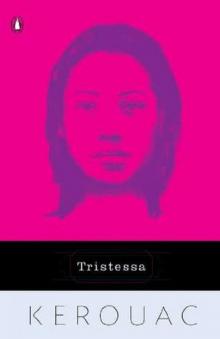 Tristessa
Tristessa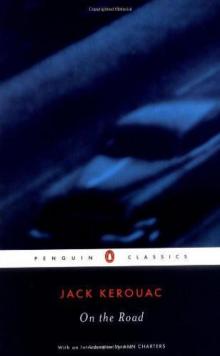 On the Road
On the Road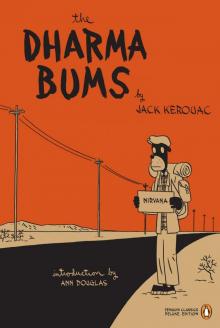 The Dharma Bums
The Dharma Bums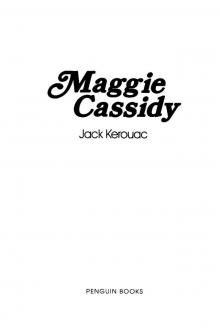 Maggie Cassidy
Maggie Cassidy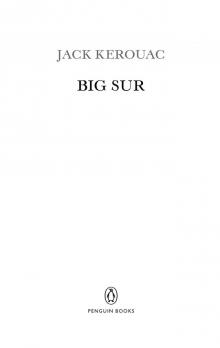 Big Sur
Big Sur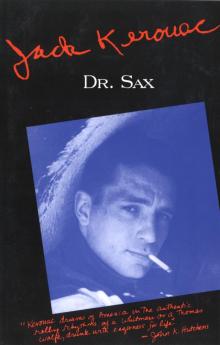 Dr. Sax
Dr. Sax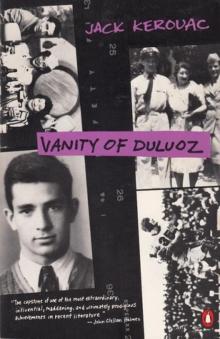 Vanity of Duluoz: An Adventurous Education, 1935-46
Vanity of Duluoz: An Adventurous Education, 1935-46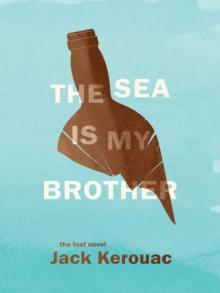 The Sea Is My Brother
The Sea Is My Brother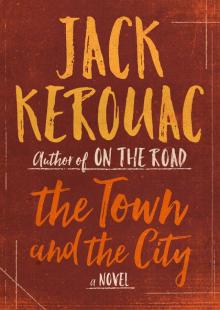 The Town and the City: A Novel
The Town and the City: A Novel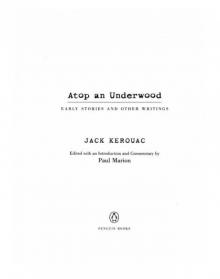 Atop an Underwood: Early Stories and Other Writings
Atop an Underwood: Early Stories and Other Writings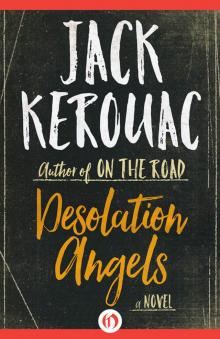 Desolation Angels: A Novel
Desolation Angels: A Novel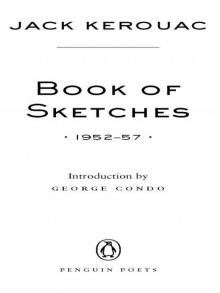 Book of Sketches
Book of Sketches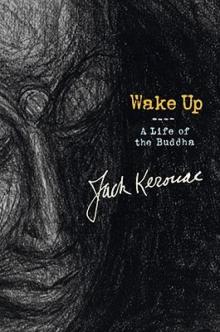 Wake Up: A Life of the Buddha
Wake Up: A Life of the Buddha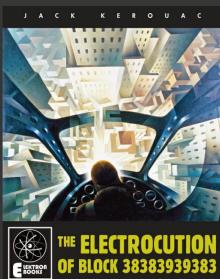 The Electrocution of Block 38383939383
The Electrocution of Block 38383939383 Haunted Life
Haunted Life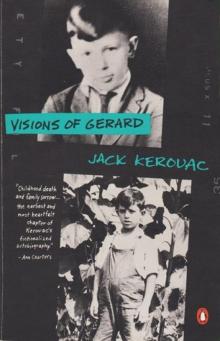 Visions of Gerard
Visions of Gerard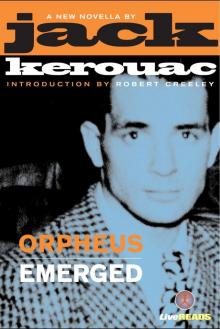 Orpheus Emerged
Orpheus Emerged Book of Blues
Book of Blues The Subterraneans
The Subterraneans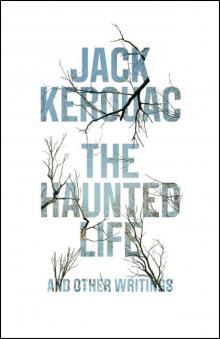 The Haunted Life
The Haunted Life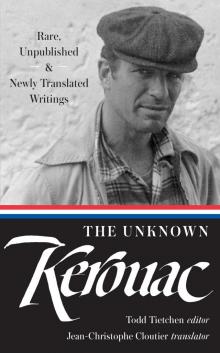 The Unknown Kerouac
The Unknown Kerouac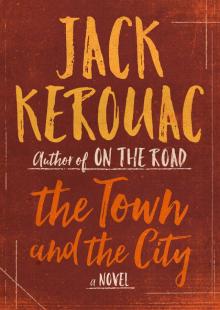 The Town and the City
The Town and the City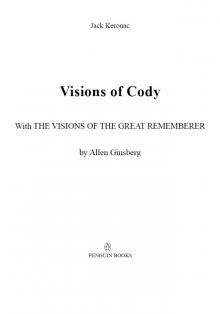 Visions of Cody
Visions of Cody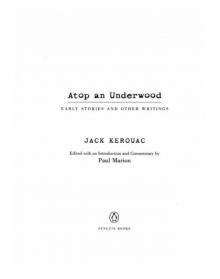 Atop an Underwood
Atop an Underwood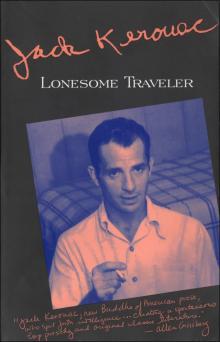 Lonesome Traveler
Lonesome Traveler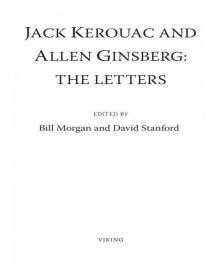 Jack Kerouac and Allen Ginsberg
Jack Kerouac and Allen Ginsberg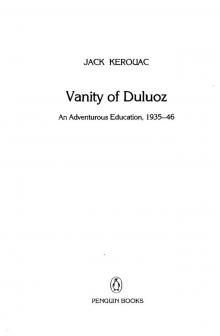 Vanity of Duluoz
Vanity of Duluoz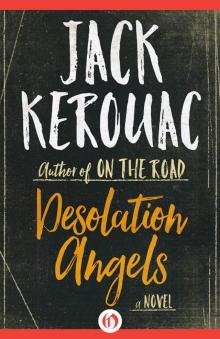 Desolation Angels
Desolation Angels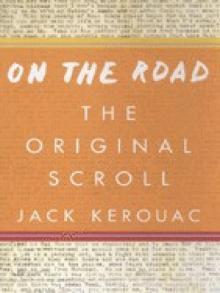 On the Road: The Original Scroll: (Penguin Classics Deluxe Edition)
On the Road: The Original Scroll: (Penguin Classics Deluxe Edition)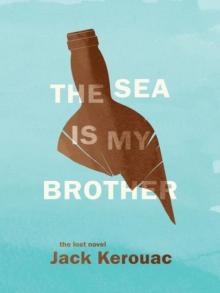 The Sea Is My Brother: The Lost Novel
The Sea Is My Brother: The Lost Novel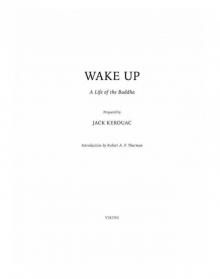 Wake Up
Wake Up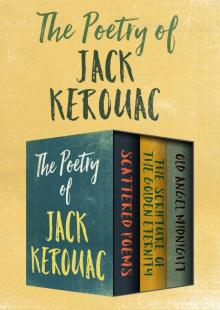 The Poetry of Jack Kerouac
The Poetry of Jack Kerouac Doctor Sax
Doctor Sax